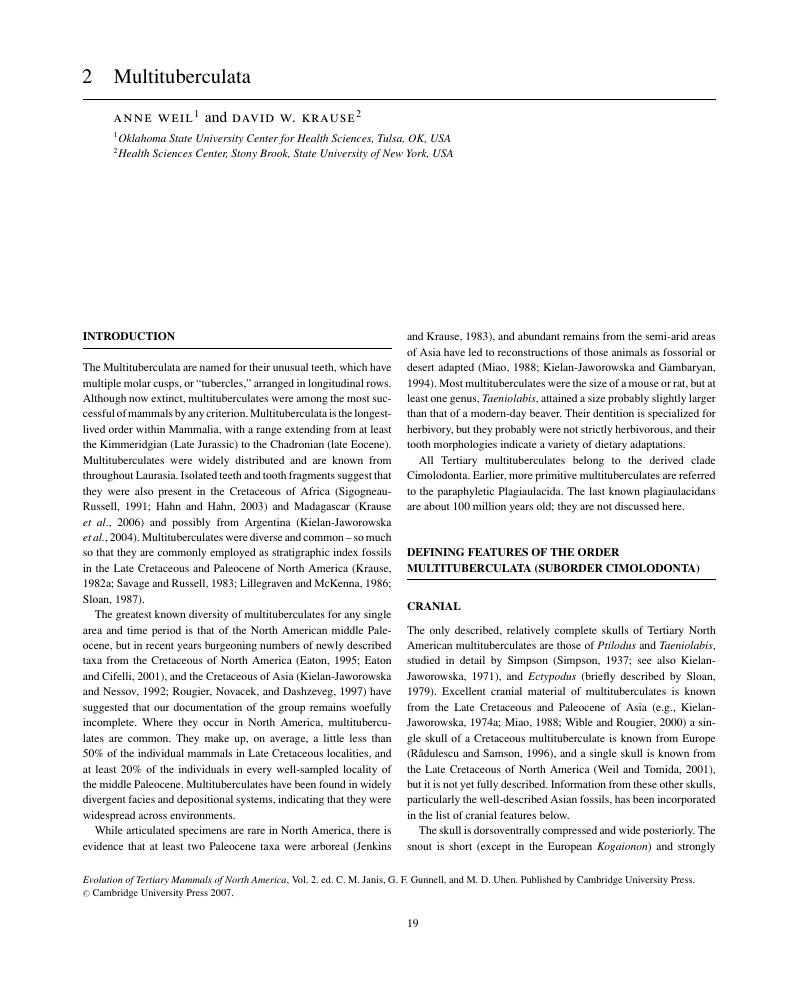2 - Multituberculata
from Part I - Non-eutherian mammals
Published online by Cambridge University Press: 07 September 2010
Summary

- Type
- Chapter
- Information
- Evolution of Tertiary Mammals of North America , pp. 19 - 38Publisher: Cambridge University PressPrint publication year: 2008
References
- 16
- Cited by

